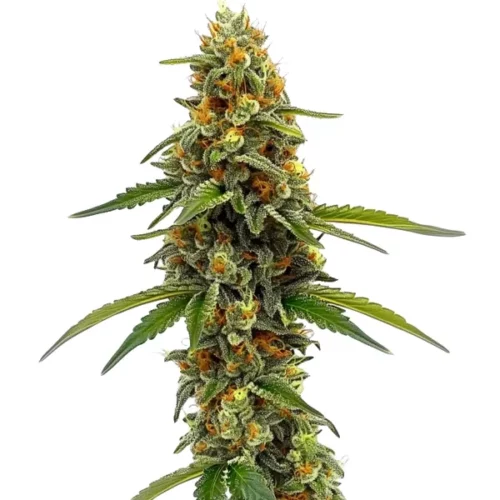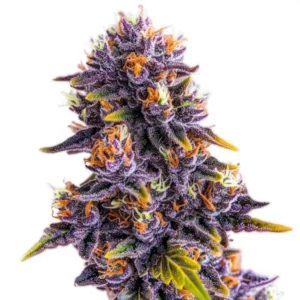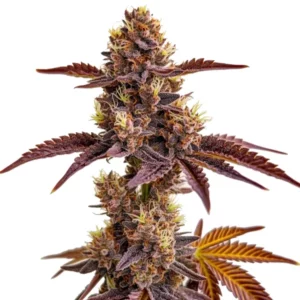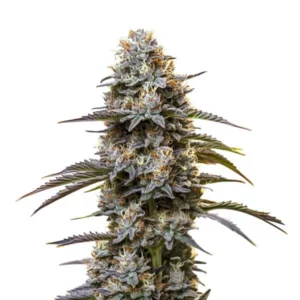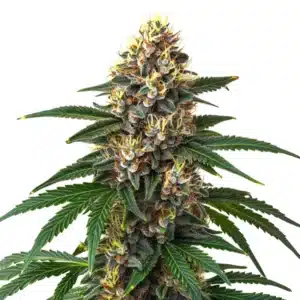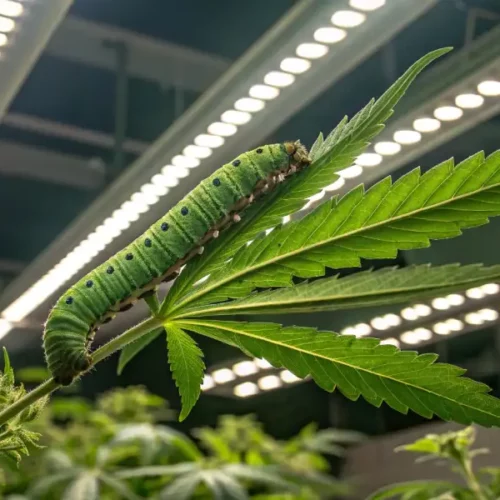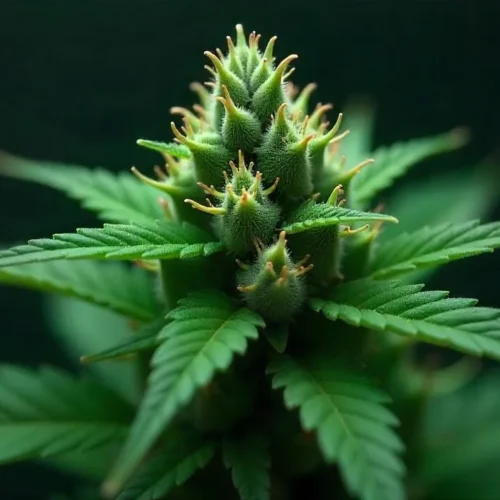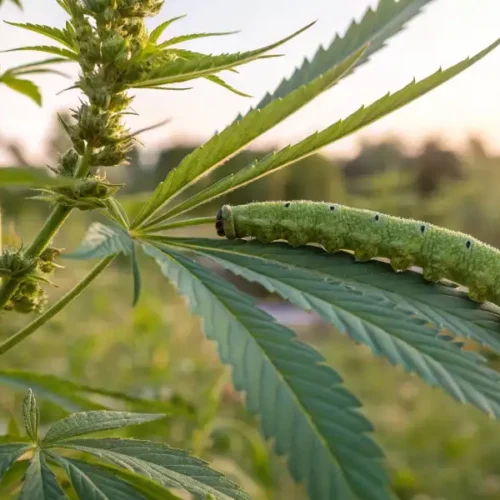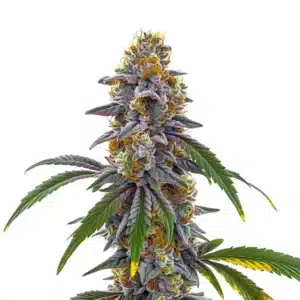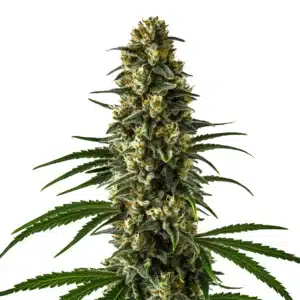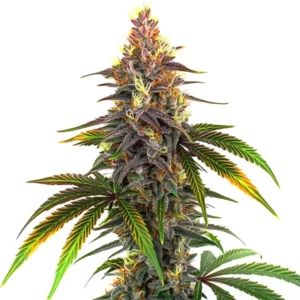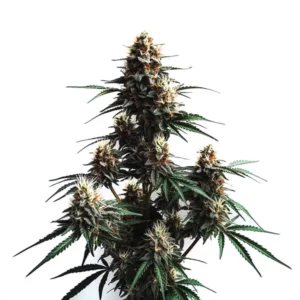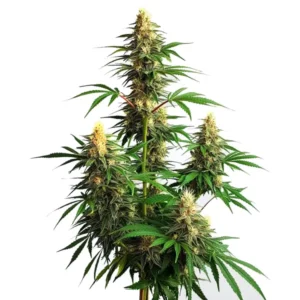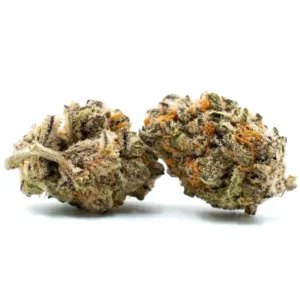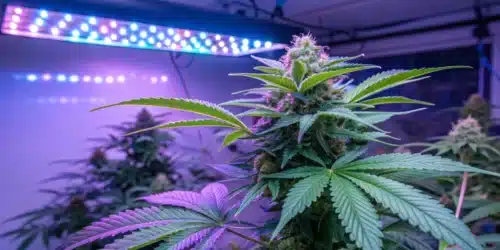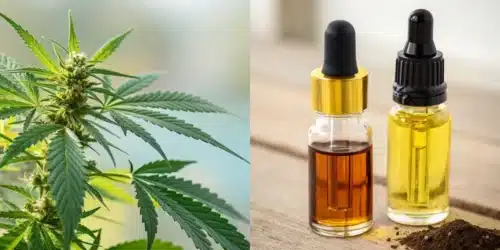Mood weed, a term increasingly familiar to both aficionados and novices in the cannabis community, refers to strains of marijuana cultivated specifically to affect emotional states and mood positively. Unlike traditional cannabis consumption, which often centers around recreational or medicinal use without precise mood targeting, mood weed offers a nuanced approach to cannabis use. By exploring the various strains and their unique effects on the human brain, consumers can choose a type of weed that matches their desired emotional outcome, whether it’s relaxation, euphoria, or improved focus.
The Science Behind Mood Weed
The science behind mood weed is essential for appreciating how it influences emotional states and well-being. This section explores how mood weed interacts with the brain, how cannabinoids like THC and CBD regulate mood, and how various strains affect emotional health.
Recommended Strains
Charlottes Web
 THC: 1%
THC: 1% Type of seed: CBD
Type of seed: CBD Phenotype: Mostly Sativa
Phenotype: Mostly Sativa Day to flower: 10 - 12 weeks
Day to flower: 10 - 12 weeks
ACDC (1:18)
 THC: 0.5% - 0.8%
THC: 0.5% - 0.8% Type of seed: CBD
Type of seed: CBD Phenotype: Mostly Hybrid
Phenotype: Mostly Hybrid Day to flower: 8 - 10 weeks
Day to flower: 8 - 10 weeks
How Cannabis Affects the Brain
The interaction between cannabis and the brain is a key factor in its mood-altering effects. The human brain contains a network of receptors known as the endocannabinoid system (ECS), which plays a crucial role in regulating mood, appetite, sleep, and pain sensation. When cannabis is consumed, its compounds, primarily THC and CBD, interact with this system by binding to its receptors, particularly CB1 and CB2. This interaction triggers various neurochemical responses, leading to changes in mood, perception, and physical sensations.
THC, or tetrahydrocannabinol, is the psychoactive component of cannabis that binds directly to CB1 receptors in the brain, resulting in the euphoric and relaxing effects commonly associated with marijuana use. This compound can increase dopamine release, a neurotransmitter associated with pleasure and satisfaction, thus enhancing mood and creating a feeling of well-being.
CBD, or cannabidiol, interacts differently with the ECS. It does not bind directly to the CB1 or CB2 receptors but influences them indirectly, modulating their activity. CBD’s interaction with the ECS and other signaling systems in the brain can alleviate anxiety, counteract the psychoactive effects of THC, and contribute to emotional balance. This makes CBD-rich strains particularly useful for mood regulation without the intense high associated with THC.
THC, CBD, and Mood Regulation
The balance between THC and CBD in a cannabis strain is crucial for its mood-regulating effects. High THC strains can effectively elevate mood and induce euphoria but may also increase anxiety or paranoia in some individuals. Conversely, strains with higher CBD content are less likely to produce these adverse effects and can offer anxiety relief and mental clarity.
The entourage effect, a theory suggesting that cannabis compounds work better together than in isolation, further underscores the importance of the THC-CBD balance. This synergistic interaction between cannabinoids, terpenes (the compounds that give cannabis its aroma and flavor), and other components of the cannabis plant can enhance the therapeutic effects of mood weed, including mood regulation and relief from mood disorders.
Strains and Their Impact on Emotional Well-being
The classification of cannabis strains into Sativa, Indica, and hybrid categories is based on their physical characteristics and effects. Sativa strains are typically associated with uplifting and energizing effects, making them suitable for daytime use when a mood lift is needed. These strains can stimulate creativity, increase focus, and enhance alertness, contributing to a positive mood.
Indica strains, on the other hand, are known for their relaxing and sedative effects, ideal for evening or nighttime use. They can help alleviate stress, promote relaxation, and aid in sleep, making them beneficial for individuals struggling with anxiety, insomnia, or chronic stress.
Hybrid strains offer a balance between Sativa and Indica effects, allowing users to experience a mix of euphoria and relaxation. The specific effects of a hybrid strain depend on its lineage and the ratio of Sativa to Indica, providing a customizable approach to mood enhancement.
Knowing the science behind mood weed helps users make informed decisions about which strains to choose, allowing them to personalize their cannabis experience for their mood enhancement goals. This knowledge empowers individuals to utilize mood weed as a tool for emotional well-being and mental health management, showcasing the therapeutic potential of this versatile plant.

Types of Mood Weed
Mood weed, with its diverse array of strains, offers a fascinating exploration into the world of cannabis designed to cater to various emotional and psychological states. Each type, whether Sativa, Indica, or hybrid, brings a unique set of effects that can enhance or alter mood in specific ways. Let’s delve deeper into these types, examining their characteristics, effects, and the mood states they are best suited for.
Sativa for Uplifting Spirits
Sativa strains are renowned for their ability to energize and uplift. Characterized by a higher THC content compared to CBD, Sativas stimulate the mind, fostering creativity, alertness, and a sense of well-being. These strains are particularly suited for daytime use, as they can enhance focus and productivity without the sedative effects associated with their Indica counterparts.
- Effects: Increased energy, enhanced focus, creativity boost, and a feeling of euphoria.
- Best For: Combatting fatigue, mild depression, and social anxiety. Ideal for creative projects, social gatherings, and activities requiring a sharp mind.
- Strain Example: Green Crack
- Description: Known for its energizing effects, Green Crack is a potent Sativa that can keep you going throughout the day. It’s celebrated for its sharp focus, invigorating mental buzz, and ability to ward off fatigue. Perfect for those needing a boost in creativity or an extra push to get through a busy day.
- Strain Example: Sour Diesel
- Description: This fast-acting strain delivers energizing, dreamy cerebral effects that have pushed Sour Diesel to its legendary status. Stress, pain, and depression fade away in long-lasting relief that makes Sour Diesel a top choice among medical patients. Its distinctive smell of diesel with a hint of citrus makes it unmistakable.
Indica for Relaxation and Calm
In contrast, Indica strains are best known for their deeply relaxing and calming effects. With a higher CBD to THC ratio, Indicas work well to soothe the body, relieve tension, and promote a peaceful state of mind. These strains are most beneficial in the evening or before bed, as they can help unwind after a long day and induce a restful sleep.
- Effects: Deep relaxation, stress and anxiety relief, pain reduction, and improved sleep quality.
- Best For: Insomnia, chronic stress, pain management, and conditions requiring deep relaxation.
- Strain Example: Granddaddy Purple
- Description: Granddaddy Purple (GDP) is a classic Indica strain that offers a fusion of cerebral euphoria and physical relaxation. While your thoughts may float in a dreamy buzz, your body is more likely to find itself fixed in one spot for the duration of GDP’s effects. It’s often chosen to combat pain, stress, insomnia, appetite loss, and muscle spasms.
- Strain Example: Northern Lights
- Description: One of the most famous Indicas in the world, Northern Lights is known for its fast-acting, deeply tranquilizing effects. It eases the body into a blissful calm, making it perfect for relieving insomnia, pain, and stress. The strain features sweet and spicy aromas, contributing to its soothing experience.

Hybrid Strains for a Balanced Effect
Hybrid strains, as the name suggests, are cultivated by crossing Sativa and Indica plants, aiming to capture the best qualities of both. These strains can vary widely in their effects, from uplifting and energizing to relaxing and calming, depending on their genetic lineage and the balance of THC and CBD.
- Effects: Can range from uplifting and creative to relaxing and sedative, depending on the specific strain and its dominant genetics.
- Best For: Those seeking a more tailored experience, hybrids can offer a balance between mental stimulation and physical relaxation. They are particularly suited for users looking for specific effects, such as pain relief without heavy sedation or mental clarity coupled with stress relief.
- Strain Example: Blue Dream
- Description: Blue Dream balances full-body relaxation with gentle cerebral invigoration. A Sativa-dominant hybrid originating in California, it has achieved legendary status among West Coast strains. Blue Dream delivers swift symptom relief without heavy sedative effects, making it a popular daytime medicine for patients treating pain, depression, nausea, and other ailments.
- Strain Example: GG4 (formerly known as Gorilla Glue #4)
- Description: GG4 is a potent hybrid strain that delivers heavy-handed euphoria and relaxation, leaving you feeling “glued” to the couch. Its chunky, resin-covered buds fill the room with pungent earthy and sour aromas inherited from its parent strains. This strain is particularly suited for stress relief and relaxation but may also help with pain and insomnia.
CBD-Dominant Strains for Anxiety and Stress
CBD-dominant strains are gaining popularity for their therapeutic potential, especially in managing anxiety, stress, and various mood disorders. Unlike THC-dominant strains, CBD-rich cannabis does not produce a psychoactive high, making it an appealing option for those seeking relief without altered consciousness.
- Effects: Anxiety relief, reduced stress, inflammation reduction, and mood stabilization without psychoactive effects.
- Best For: Anxiety disorders, chronic stress, PTSD, and individuals sensitive to THC’s psychoactive effects.
- Strain Example: Charlotte’s Web
- Description: Charlotte’s Web is a hemp-derived strain with high CBD content and low THC levels, making it one of the most famous strains for medical use, especially for controlling seizures. Its use has also been found beneficial for stress and anxiety relief, without the psychoactive effects associated with THC.
- Strain Example: ACDC
- Description: ACDC is another high-CBD, low-THC strain, making it great for those looking to avoid the high while reaping all the benefits of cannabis. It’s known for its efficacy in treating various ailments, including pain, anxiety, epilepsy, and the adverse effects of chemotherapy, all with a clear-headed effect.
THC-Dominant Strains for Mood Elevation
THC-dominant strains are sought after for their potent mood-elevating properties. These strains can produce a significant high, characterized by euphoria, heightened senses, and, in some cases, increased creativity. However, it’s important to approach THC-rich strains with caution, especially for those new to cannabis or with lower tolerance levels, as they can also induce anxiety in higher doses.
- Effects: Euphoria, enhanced mood, creativity, and sensory perception.
- Best For: Enhancing mood, creativity, and for recreational use where legal.
- Strain Example: Pineapple Express
- Description: Combining the potent and flavorful forces of parent strains Trainwreck and Hawaiian, Pineapple Express is a Sativa-dominant hybrid that delivers a long-lasting energetic buzz perfect for productive afternoons and creative escapes. Its noted aroma of fresh apple and mango, with a taste of pineapple, pine, and cedar, make it a delight for the senses.
- Strain Example: Jack Herer
- Description: Named after the famed cannabis activist, Jack Herer is a Sativa-dominant cannabis strain that has gained as much renown as its namesake. The strain offers a blissful, clear-headed, and creative high. It’s beloved for daytime activities as it helps reduce stress and depression while allowing for focus and creativity.
Specialized Strains for Specific Moods
Advancements in cannabis cultivation have led to the development of specialized strains designed to induce or enhance specific moods. From strains that encourage laughter and sociability to those that promote introspection and calm, the possibilities are nearly endless. These specialized strains are a testament to the sophistication and diversity of modern cannabis cultivation, offering personalized options for mood enhancement.
- Effects: Tailored to specific emotional states, such as joy, relaxation, creativity, and introspection.
- Best For: Individuals looking for a specific emotional or psychological experience, whether for therapeutic purposes or personal exploration.
Exploring the different types of mood weed provides a window into the personalized nature of cannabis use today. As knowledge about how different strains influence mood and well-being expands, consumers are now better prepared to choose the type of weed that best matches their desired emotional state. As research continues and legalization expands, the future of mood-specific cannabis looks promising, with potential for even more refined and targeted strains on the horizon.

Mood Weed for Medical Use
Mood weed’s potential extends beyond recreational use, showing promise in the management of various medical conditions. Anxiety, depression, and chronic pain are among the ailments that mood-specific cannabis strains can help alleviate, offering a natural alternative to traditional medications.
Anxiety and Stress Relief
For those suffering from anxiety and stress, CBD-rich strains can offer significant relief. The anxiolytic properties of CBD can help calm the mind and reduce anxiety levels without the psychoactive effects of THC.
Depression and Mood Swings
Cannabis strains with a balance of THC and CBD can be effective in managing depression and mood swings. The euphoric effects of THC, combined with the stabilizing influence of CBD, can help uplift mood and bring about a sense of emotional balance.
Chronic Pain and Insomnia
Indica strains, known for their sedative effects, are particularly effective in managing chronic pain and insomnia. By promoting relaxation and reducing pain, these strains can improve the quality of sleep and overall well-being.
Cultivating Your Own Mood Weed
For enthusiasts interested in a more hands-on approach to their cannabis use, cultivating mood weed offers an opportunity to personalize the experience further. Growing cannabis allows for control over the strains, cultivation conditions, and harvesting times, tailoring the final product to specific mood enhancement needs.
Best Practices for Growing Cannabis
Successful cannabis cultivation requires knowing the plant’s needs, including lighting, watering, nutrition, and proper harvesting techniques. Choosing the right strain is also crucial, as different strains have varying growth requirements and effects.
The Importance of Genetics
The genetics of a cannabis plant play a significant role in its final mood-altering properties. Selecting strains with the desired THC and CBD ratios and other cannabinoid and terpene profiles is essential for cultivating mood weed that meets individual preferences and needs.
Promos & Deals
Mood Weed in Popular Culture
Cannabis, including mood weed, has long been a part of popular culture, reflected in music, movies, and television. This representation has played a role in shaping public perceptions of cannabis, contributing to its increasing acceptance and normalization.
Representation in Media and Music
Cannabis has been celebrated in various forms of media and music, often associated with creativity, relaxation, and an alternative lifestyle. This representation has helped to demystify cannabis use and bring it into mainstream conversations.
Celebrity Endorsements and Influence
Celebrities have also played a significant role in popularizing cannabis use, including mood weed. High-profile endorsements and candid discussions about cannabis use have helped to challenge stigmas and promote a more open dialogue about its benefits and uses.
The Future of Mood Weed
The future of mood-enhancing cannabis seems bright, as ongoing research into its effects on mood and health continues. Combined with evolving legal frameworks, this progress is leading to greater access and insight into its potential benefits. Advancements in cannabis genetics and cultivation techniques are likely to produce even more targeted and effective mood weed strains, offering consumers a wide range of options for mood enhancement.
Advancements in Cannabis Research
Ongoing research into cannabis and its compounds is uncovering new insights into how different strains affect mood and health. This research is crucial for developing more effective mood weed strains and for informing safe and beneficial use.
Trends in Consumption and Legalization
As legal barriers to cannabis use continue to fall in many parts of the world, trends in consumption are evolving. There is a growing interest in mood-specific cannabis use, with consumers seeking out strains that offer tailored effects for relaxation, mood enhancement, and mental health management.


